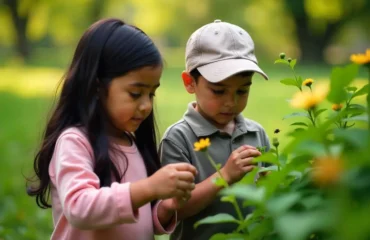
Imagine a room filled with laughter, tiny hands covered in paint, and the sound of nursery rhymes playing in the background. That is a pre-nursery school where learning feels like an adventure, and every discovery sparks excitement.
For little ones, a pre-nursery school is their first structured learning experience. It is the place where they begin to explore the world beyond home, make friends, and develop essential skills through plays, storytelling, music, and other exciting activities. In this article, we will explore the world of pre-nursery schools and their activities. So, let’s get started!
What do Pre Nursery Schools Do?
Pre-nursery schools, often called play schools or early learning centers, are designed to introduce young children (typically aged 2 to 4 years) to the basics of education in a fun, engaging, and structured environment. They bridge home and formal schooling, helping children develop essential skills that prepare them for nursery and kindergarten. Here’s why these institutions are important:
- Foster Early Learning Through Play-Based Activities: These schools mostly follow play-based learning approach to introduce basic concepts o f alphabets, numbers, shapes, and colors to children.
- Encourage Social and Emotional Development: Children also begin to engage in social interactions in play schools. They make friends, interact with them and express their thoughts with them which boosts emotional development.
- Develop Communication and Language Skills: Children begin to communicate with their peers and develop essential language skills in the preschools.
- Improve Motor Skills and Physical Coordination: Through a series of fun and engaging activities like coloring, clay modeling, puzzle solving, outdoor games, etc. the pre-nursery schools help in enhancing a child’s motor skills.
- Introduce Basic Routines and Discipline: Children develop a sense of discipline by following a structured routine in pre-nursery schools.
- Nurture Creativity and Imagination: Pre-nursery schools also nurture creativity skills in children by allowing them to explore their potential freely through art, music, dance, and pretend play.
Also read: Top 12 Reasons Why Your Child Should Attend Pre-nursery School
Some Popular Pre Nursery Activities
Pre-nursery schools mostly focus on play-based learning methods to develop some basic yet essential skills in children. Let us have a look at some of the popular pre-nursery activities that often take place in these schools:
Storytelling and Rhymes – Bringing Words to Life
Storytelling is proven to be the most efficient method for maintaining children’s curiosity while enhancing listening and language skill development. Educators use storytelling where they adopt fairy tales and short moral stories through expressive voice and gestures and props to keep students attentive. Through puppet shows children find stories entertaining since they appreciate engaging with colorful characters along with interactive components.
Sensory Play – Exploring the World Through Touch and Feel
Learning through the senses acts as an optimal learning approach for children and sensory activities help them discover sensorial elements and material features. Young children’s exploration of sand, water, rice and textured items such as sponges and cotton and clay facilitates creativity and develops fine motor skills significantly.
Free Play and Role-Playing – Unleashing Imagination
Children in early childhood use pretend play as they adopt roles from the real world for imitation purposes. Children use role-playing activities to safely emulate realistic situations by acting like doctor, teacher, chef and shopkeeper in an entertaining context.
Art and Craft – Encouraging Creativity and Expression
Activities like drawing, painting, and crafting in pre-nursery classrooms enable children to display their creative ideas and emotional expressions through pictures. The pre-nursery classroom environment includes finger painting stations alongside paper tearing and pasting activities and coloring materials as well as self-made art projects to maintain student attention.
Outdoor Play and Physical Activities – Boosting Strength and Coordination
Young children need physical movement for their development. Outdoor play enables them to improve their balance and coordination as well as build their strength. Schools organize physical exercises such as running while students jump over little obstacles to build gross motor abilities along with climbing platforms and balancing barrier activities.
Sorting and Matching Games – Developing Logical Thinking
The development of mental abilities stands as a main priority in pre-nursery education while activities that involve sorting and matching enable students to strengthen their problem-solving capacities. Courses that entice children to sort items based on dimensions or features through building blocks or flashcards let them develop logical reasoning abilities and pattern detection capabilities.
Puzzle Time and Building Blocks – Enhancing Problem-Solving Skills
The combination of simple puzzles and block-building activities assists pre-nursery children in developing their hand-eye coordination as well as their patience together with spatial awareness abilities. Puzzle pieces of bigger size help children identify shapes and pictures simultaneously as block construction tasks let them test different combinations and construct structures.
FAQs:
What is the right age to enroll my child to pre-nursery school?
Typically the right age to enroll a child to a pre-nursery school is 2 to 4 years. Children falling under this age group can be put into a pre-nursery school.
How to find the best pre-nursery school in my area?
Make a list of all the pre-nursery schools in your area. Enquire about each of the schools and choose the one which best fits your child’s requirements.
Can I enroll my 3 year old son to a pre-nursery school?
Of course. Any child between the age group of 2 to 4 can be enrolled in a pre-nursery school.





